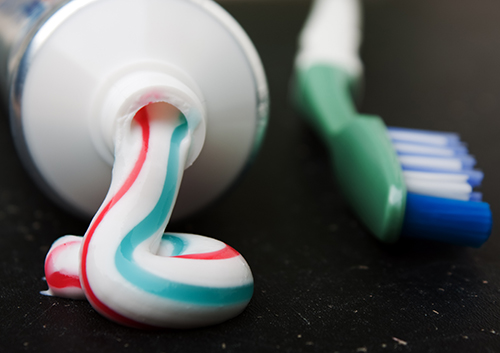August 3rd, 2018

People who have diabetes are usually familiar with many of the other health risks they face, including damage to the nerves, eyes, heart, and kidneys. But did you know that if you have diabetes you also have a much greater chance of developing gum disease? It's true, and like other diseases related to diabetes, the risk potential severity of gum disease is directly related to how well blood sugar is controlled.
The Causes
In diabetics, there are two primary mechanisms that increase the risk of developing gum disease, also called periodontal disease:
- Bacterial growth: Bacteria love sugar including the glucose found in blood and bodily fluids. Elevated levels of sugar in saliva can provide a very hospitable environment for bacterial growth. The risk may be elevated if your gums bleed.
- Circulatory changes: In diabetes, the blood vessels become thick, making it more difficult for blood to carry oxygen to the gums and to carry away harmful waste products. This decrease in circulation can weaken the mouth's natural resistance to decay. If you smoke, circulation can become even more compromised, significantly increasing your risk of periodontal disease.
Preventing Gum Disease
If you're diabetic, the number-one key to preventing gum disease is to make sure you do all you can to keep your blood sugar under control. In fact, studies show diabetics who have excellent control of their blood sugar levels have no more risk for gum disease than those who don't have diabetes. Here are some other tips to keep your gums healthy:
- Floss your teeth gently, curving the floss so it can gently reach just below your gum line to remove plaque and food particles. Rinse your mouth when you're done flossing.
- Use a soft-bristle brush to brush teeth twice daily, using small circular motions. Avoid pressing too hard on tooth surfaces.
- Brush your tongue gently to remove germs that can hide there.
- Use an anti-bacterial mouthwash to kill germs that are hard to reach.
- Keep track of how well your blood sugar is controlled and let Dr. Sepi Taghizadeh know at each visit.
- Be aware that having diabetes may mean it takes you longer to heal after undergoing oral surgery.
Most importantly, be sure to visit our Minneapolis, MN office for regular checkups and tell Dr. Sepi Taghizadeh about your diabetes so you can be sure to get the care you need. Follow these steps, and you can enjoy healthy teeth and gums for years to come.
July 27th, 2018

Dr. Sepi Taghizadeh and our team recommend that you brush your teeth two to three times a day, for at least two minutes each time. But have you ever wondered what’s in toothpaste and how it actually works? The mouth is home to more than 500 types of microorganisms that feed on leftover food that gets stuck on and around your teeth. Toothpaste is the best line of defense against all those pesky microorganisms (especially when you brush two to three times a day). Here’s how it works.
Abrasives
Toothpaste contains mild abrasive additives that combat microorganisms and fight plaque. When you brush, the abrasives in toothpaste dislodge food particles and microorganisms more effectively than if you simply brush your teeth with water. The abrasives also work to remove food stains and polish the surface of the tooth. Some toothpastes include ingredients like triclosan and Xylitol. These chemicals prevent the growth of bacteria that produce plaque. Plaque not only causes cavities, but it can also lead to more dangerous issues like periodontal disease.
Fluoride
Fluoride is key ingredient in toothpaste. As the microorganisms in your mouth feed off the leftover food particles, they leave behind acid and sulfur byproducts that wear away the enamel of the teeth. This is the fancy, technical way of saying that the acid on your teeth causes cavities. As for the sulfur byproduct –well, that’s just a fancy, scientific name for bad breath. Fluoride works to fight the acid and help protect the teeth. By brushing, the fluoride is incorporated into the tooth enamel, which in turn makes the tooth more resistant to acid and plaque.
Flavoring and Sweetening Agents
Not all toothpaste tastes the same, right? The type of flavoring or sweetening agents added to the toothpaste doesn't have anything to do with fighting microorganisms and plaque, but taste is one of the most important selling points in finding a toothpaste brand you like. Flavoring agents mask the taste of some of the other ingredients in toothpaste, and without those agents chances are nobody would be brushing their teeth two to three time a day.
July 20th, 2018

There is no substitution for a natural healthy tooth. Dental fillings are intended to replace tooth structure and restore a tooth damaged by decay (a cavity) back to its normal function and shape. Silver (amalgam) and tooth-colored (composite) fillings last a long time, though they can develop decay when the integrity is compromised by open margins, fracture, or recurrent decay. In this blog, we discuss the signs and symptoms that indicate your filling may need to be replaced in order to prevent further complications.
Amalgam fillings are made of an alloy (mixed metals) that expands and contracts. They have no bonding properties, and so to place an amalgam filling, the hole in the tooth may need to be larger. Because of these two factors, fractures frequently occur. There are three types of cracks that are commonly associated. Craze lines are superficial with no treatment needed. Fractures extend along other parts of the tooth and may require a filling replacement or crown. Cracks extend toward the root and can require a root canal and crown or, if too severe, extraction.
A filing needs to be sealed to the tooth. If the seal between the tooth and the filling breaks down, food debris and bacteria can seep down under the filling and cause recurrent decay. If the decay is treated early, replacing the filling is adequate. If not, a crown and even a root canal may be needed. The biggest mistake you can make is waiting to do something about a broken or unsealed filling until it is painful. Doing this will only make the treatment more involved and often times more expensive.
Regular dental exams and X-rays are used to evaluate dental fillings. You will not be able to tell on your own when your fillings start to fail. Just as a car mechanic will change the oil, correct your alignment, or change your tires, a dental checkup will help you identify small concerns to fix as you go in order to avoid a critical emergency.
Pay attention to any bite or temperature sensitivity in teeth that have fillings. This can be an indicator for some of the problems listed above. You know your teeth better than anyone. Your observations are most valuable when evaluating a filling for replacement. If replacement is needed, know you are doing what is best to prevent future dental calamities and make an appointment to see Dr. Sepi Taghizadeh.
July 13th, 2018

Sometimes cavities are hard to avoid. Our team at Isles Dental wants you to know you aren’t alone when it comes to getting cavities. They can appear in both children and adults, and in order to avoid the pain and hassle, you need to understand how they form and what to do to prevent them from developing in the first place.
Cavities form when bacteria, acids, or sugars build up and form plaque on your teeth, which can destroy your enamel. When you don’t brush and floss properly, the build-up can cause cavities to form. In essence, a cavity is a decayed part of your tooth that cannot be repaired by your body’s immune system. This is why a dentist will need to treat your cavity with a filling. If it grows for too long and manages to infect the root of your tooth, a root canal may be the only solution.
Cavities are often symptom-free; you might not experience any pain at first, other than the occasional irritation when you drink a hot or cold beverage. Other signs of possible cavities include persistent bad breath, pus or discharge around a tooth, black or brown discoloration, small pits or holes in a tooth, and perhaps a sticky feeling when you bite down. It’s crucial to treat cavities sooner rather than later if you wish to avoid excessive pain and the necessity of a root canal.
You can avoid cavities by keeping up with good oral hygiene, eating a well-balanced diet, and scheduling regular cleanings with Dr. Sepi Taghizadeh. They can still occur at any time, no matter what age you are, so make sure to brush, floss, and rinse every day. If you notice any of the above symptoms, please contact our Minneapolis, MN office and schedule an appointment.







 Website Powered by Sesame 24-7™
Website Powered by Sesame 24-7™